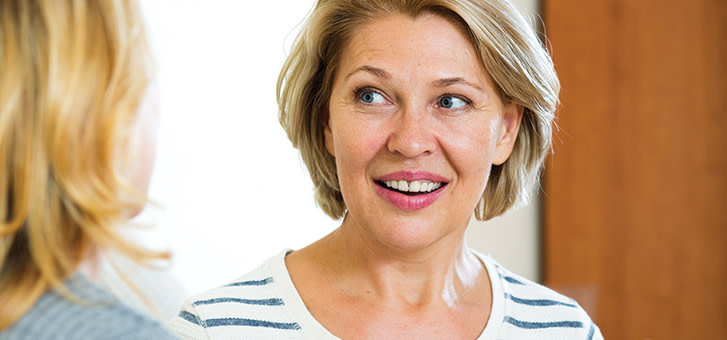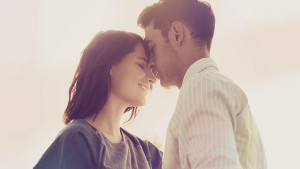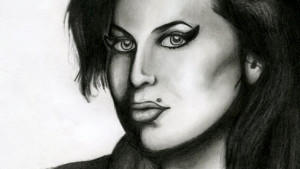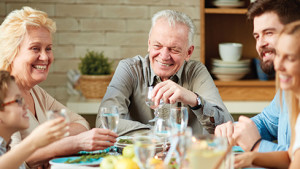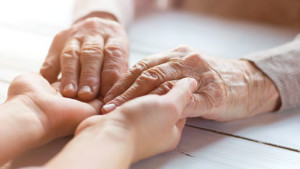We’d sat on her blue couch every week for more years than either of us cared to remember. The blue couch was getting old, which I guess meant that we were too. We weren’t getting old in a zimmer-frame-and-slippers-all-day kind of way; just significantly older than we were the first time we realised our conversations together could probably solve all of the world’s problems.
The blue couch was where most of the world-changing had happened, beginning with our uncanny ability to predict winners of American Idol based solely on a contestant’s performance in Week Three and whether they had worn a hat to their audition. Following this, we uncovered our knack for predicting winners of Survivor based on a contestant’s ability to remember names and build a fire. So we weren’t exactly changing the world, but interspersed between our reality TV binge-watching sessions, we did solve each other’s problems.
Whenever life kicked one of us a little harder than we could bear, the text message we sent the other was quick and simple: “I need time on the blue couch.” A session would be arranged.
The blue couch was where we were sitting together for what seemed like the millionth time when we were simultaneously drowning in our individual lives as never before. Sara’s husband had just swiftly and unexpectedly left her after 15 apparently happy years together, and my mum was barely clinging to her life after a three-year battle with bone and liver cancer.
We cried and cried and cried, and began to wonder whether the blue couch had lost its magical ability to make everything better. We shared our deep stories of pain and loss. We ate too many deep fried foods. We sat and pondered, screamed and grieved, and occasionally laughed when someone wore a hat to their reality TV singing audition and still thought they had a chance of winning.
Sara was my best friend of 23 years and even though our lives had taken us in completely different directions, there was nothing I couldn’t share with her. She was a high-powered professional in the lucrative world of IT, while I was a struggling musician and writer. She was married and trying to have a baby while I was blissfully single with no desire for romantic attachment or children. She was renovating her third home, while I was travelling the world and spending too many nights on the variously coloured couches of strangers and new friends.
What was it that made her the person I turned to in my darkest of hours and her, me? What was it that had kept us in each other’s lives after all of these years? In our disposable world, filled to the brim with tenuous human connections, why do some friendships survive and other’s get replaced as quickly as a chart-topping single by last season’s X Factor winner?
Our fascination with new, shiny things leaves little space for lasting human connections. Life coach Amanda Rivera addresses this issue on a daily basis with her clients. “I can definitely see how our culture promotes ‘in with the new and out with the old’,” she says.
We do it with material possessions and we do it with friends. We acquire. We become dissatisfied. We discard. We rest a while. We repeat the cycle. Unsurprisingly, many of us choose instead to close ourselves off to protect ourselves from heartbreak. As life coach Tanya Wasylewski says, “It can often be difficult for people to be vulnerable in our culture of always showing the Insta-perfect moments. It takes a lot of courage to let someone into your vulnerable space.”
Dr Brené Brown is a research professor at the University of Houston’s Graduate College of Social Work in America. She has spent the past 13 years studying vulnerability, courage, worthiness and shame. Her work has bridged the gap of theory and practice, and the trait of vulnerability is what she identifies as the key trait in lasting relationships, be they romantic or not.
“Staying vulnerable is a risk we have to take if we want to experience connection,” she writes in her book, Daring Greatly. It is a non-negotiable trait that is present in every healthy long-term relationship.
John Boese, founder and CEO of website Go Find Friends, sees the same factor play out in his work. “Vulnerability is the key that unlocks the door to lasting friendships. Our vulnerability is what makes us authentic and our authenticity is what makes us loved.”
Being vulnerable, by its very definition, appears to put us in a position of weakness. However, Brown’s research routinely shows the exact opposite. “Vulnerability sounds like truth and feels like courage. Truth and courage aren’t always comfortable, but they’re never weakness.” If both halves of a friendship are able and willing to engage in vulnerability together, if they are willing to “show up” as psychological therapist Annie Gurton puts it, then lasting friendship is almost inevitable.
Choosing this course in the midst of a culture that does everything it can to dissuade us from vulnerability, hard work and genuine connection requires great courage however. The issue of “showing up” pops up time and time again amongst vulnerability and relationship experts.
“Courage starts with showing up and letting ourselves be seen,” says Brown. We have to take the risk of allowing others to see who we truly are if we want to experience the joy of genuine connections.
Life coach Lynn Anderton points out that genuine connection is only possible when “both parties feel that they can show their vulnerabilities equally within the union.” Sometimes this happens on a blue couch and you find yourself grateful beyond words that somebody knows all of who you are and still wants to share in your life. The strange thing is we don’t realise this at all when we meet our lifelong friends for the first time.
I entered high school in the early nineties. My eldest sister was busy drowning in an ocean of hairspray, shoulder pads, Sweet Valley High novels and mismatched floral prints. My middle sister was regularly falling victim to crochet vests and an array of scrunched down socks in all the colours of the rainbow. Me? Well, I was just sad.
I’m not one who embraces change with any degree of success. If I could have stayed in primary school forever, I would have gladly and swiftly made that decision. Yeah, sure, it would have been a bit weird to get to 18 and be with classmates who only reached up to my knees, but I would have done it. I would have done just about anything to avoid the challenge of having to “show up” in front of a whole new tribe of people.
The truth was, I just wasn’t like many other girls. I didn’t want to go to the bathroom in pairs. I didn’t want to wear short skirts. I didn’t want to listen to Salt-N-Pepa on repeat while choreographing a dance to “Push It.” I didn’t want to giggle. I didn’t want to have a boyfriend. What I wanted to do was play hockey and listen to Mariah Carey CDs on repeat. No dancing, just listening.
It wasn’t an issue of making superficial friends—I was quite the expert at doing that. I made friends almost instantly; it’s just that none of them really knew who I was and I wasn’t about to tell them. It was exhausting being friends with people who I never let see or accept who I really was. It was easier to giggle with a girlfriend while going to the bathroom together, talking about our latest crushes. The vulnerability that came from sharing that I didn’t like any of those things was beyond me. I’d be replaced for sure.
I was saved from myself by someone I barely knew at a gym class. A 12-year-old girl called Sara approached me and began to tell me all about her first kiss. It was her biggest secret and even though I knew she liked Salt-N-Pepa, I allowed myself to be enveloped in her vulnerability. She was embarrassed because he was a year older than us and was refusing to talk to her in front of his friends. I couldn’t have known at the time that 23 years later, we’d be sitting on her couch crying over death and divorce, but something in me decided that I was ready to be vulnerable with her too.
“Sara, there’s something I’d like to tell you too. I really don’t like Salt-N-Pepa and I hate gymnastics. I love Mariah Carey and playing hockey.” She laughed a little at the fact that those were my biggest secrets, then said, “I love Mariah Carey too and I just signed up to play soccer this year. I think we should be best friends.”
I know it seems hard to believe but I guess sometimes, really good things come out of a Mariah Carey addiction. When vulnerability is met with vulnerability, human connections become more and more impenetrable. Decades pass, secrets get bigger and harder, and blue couches sometimes need to be replaced by grey-blue ones, but the core remains the same. Show up. Allow yourself to see and be seen. Marvel at the joy of connection. Rest a while. Repeat.

